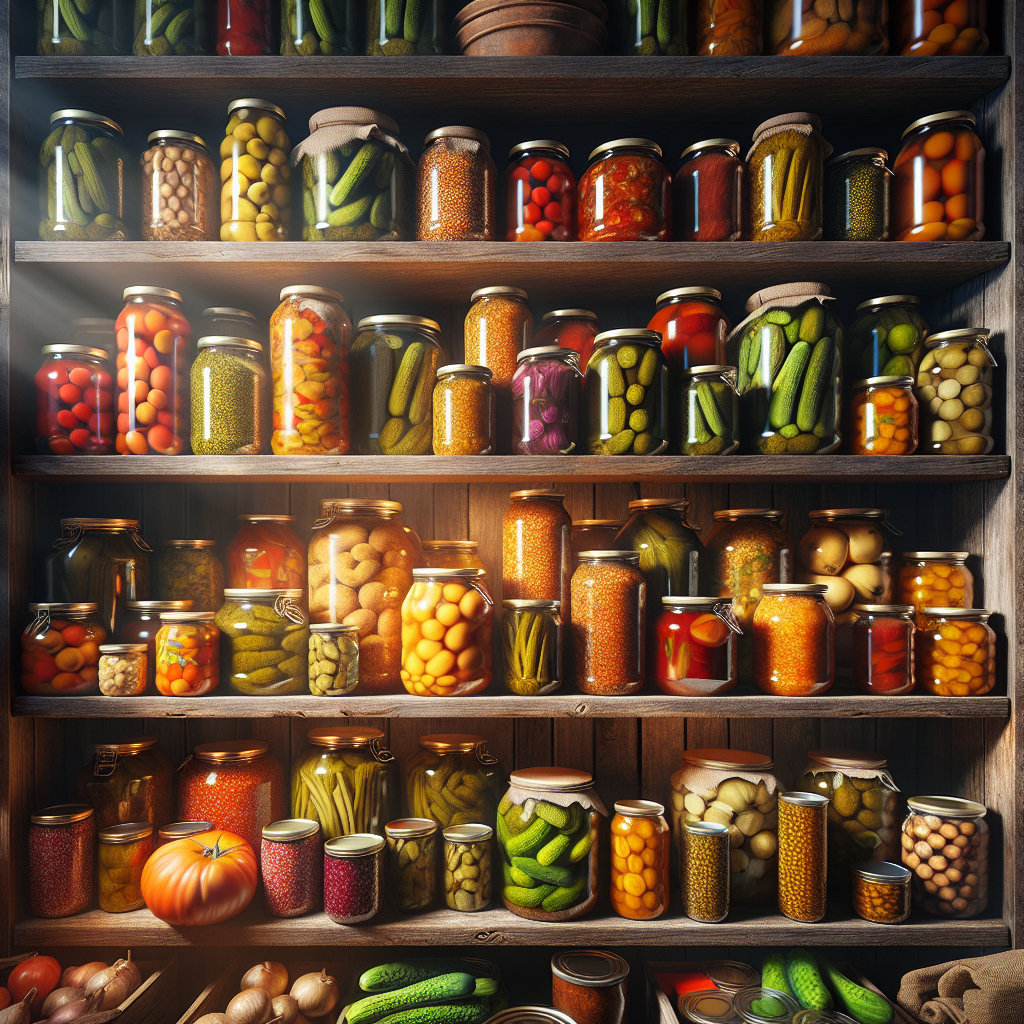Canning and preserving food is not only a practical method for extending shelf life, but it’s also a rewarding way to enjoy seasonal produce year-round. This ultimate guide covers everything from essential equipment to safe practices, various methods, and delicious recipes.
Why Canning and Preserving?
Canning and preserving help lock in the flavor and nutrients of fruits, vegetables, and herbs. Additionally, it reduces food waste and allows you to enjoy your garden’s bounty or farmers’ market finds long past their season.
Essential Equipment
- Canning Jars: Glass jars come in various sizes (half-pint, pint, quart). Choose ones designed for canning.
- Lids and Bands: Lids must create an airtight seal; bands hold the lid in place during processing.
- Water Bath Canner: Essential for high-acid foods (like fruits, pickles, and jams).
- Pressure Canner: Necessary for low-acid foods (like vegetables and meats) to reach higher temperatures.
- Jar Lifter: Helps safely remove hot jars from the canner.
- Funnel: Aiding in filling jars without spills.
- Bubble Remover/Headspace Tool: To remove air bubbles and measure headspace.
- Thermometer: For checking temperatures accurately.
Safety Practices
Safety is paramount in canning to prevent foodborne illnesses. Here are key guidelines:
- Choose Fresh Produce: Use only fresh, ripe ingredients. Overripe or damaged food can alter flavor and safety.
- Sterilize Jars: Wash jars and lids in hot, soapy water. Sterilize them by placing them in boiling water for 10 minutes.
- Follow Recipes: Use tested recipes from reliable sources. Exact measurements and timings ensure safety.
- Check Seals: After cooling, press the center of the lid. If it doesn’t pop back, the jar is sealed properly.
- Store Properly: Keep jars in a cool, dark place. Use within a year for best taste.
Canning Methods
1. Water Bath Canning
Best for high-acid foods like:
- Fruits: Apples, peaches, tomatoes
- Jams and Jellies: Strawberry jam, raspberry jelly
- Pickles: Dill pickles, bread and butter pickles
Steps:
- Prepare your food and fill jars, leaving the recommended headspace.
- Process jars in a boiling water bath for the required time.
- Remove jars and let them cool, checking for a proper seal.
2. Pressure Canning
Essential for low-acid foods such as vegetables, meats, and poultry.
Steps:
- Prepare your food, weighted appropriately.
- Fill jars and wipe rims to ensure a good seal.
- Place jars in the pressure canner, vent steam for 10 minutes, then seal and process according to your food type.
Delicious Recipes
1. Classic Strawberry Jam
Ingredients:
- 2 cups strawberries, hulled and crushed
- 1 cup sugar
- 1 packet pectin
Instructions:
- Combine strawberries and sugar in a pot and let sit for 10 minutes.
- Stir in pectin and bring to a boil, stirring constantly for 1-2 minutes.
- Fill sterilized jars and process in a water bath for 5-10 minutes.
2. Spicy Dill Pickles
Ingredients:
- 2 lbs cucumbers
- 2 cups water
- 1 cup vinegar
- 1 tablespoon salt
- Dill, garlic, and red pepper flakes to taste
Instructions:
- Slice cucumbers and pack into jars with dill and garlic.
- Combine water, vinegar, and salt, bringing to a boil.
- Pour over cucumbers, leaving appropriate headspace. Process for 10-15 minutes in a water bath.
3. Zucchini Relish
Ingredients:
- 6 cups chopped zucchini
- 2 cups chopped onion
- 1 cup chopped bell peppers
- 4 cups vinegar
- 3 cups sugar
- 2 tablespoons mustard seeds, celery seeds, and turmeric
Instructions:
- Combine chopped veggies and salt; let sit for 3 hours.
- Drain and rinse. Combine all ingredients in a pot and bring to a boil.
- Fill jars and process for 10 minutes in a water bath.
Troubleshooting Common Issues
- Jar Won’t Seal: Ensure you’ve properly sterilized the jar, cleaned the rim, and followed the recipe’s headspace.
- Food Spoiled: Check for signs of spoilage (off-smell, mold). Improper sealing or processing times may be the culprit.
- Too Much Liquid or Air Bubbles: Carefully remove air bubbles before sealing, and ensure liquid is at the right level.
Conclusion
Canning and preserving food can be a fulfilling hobby that allows for creativity and resourcefulness. By following safe practices and preserving seasonal produce, you can enjoy delicious homemade goods year-round. Whether you’re a beginner or looking to refine your skills, this ultimate guide will help you on your journey to becoming a canning expert. Happy preserving!

